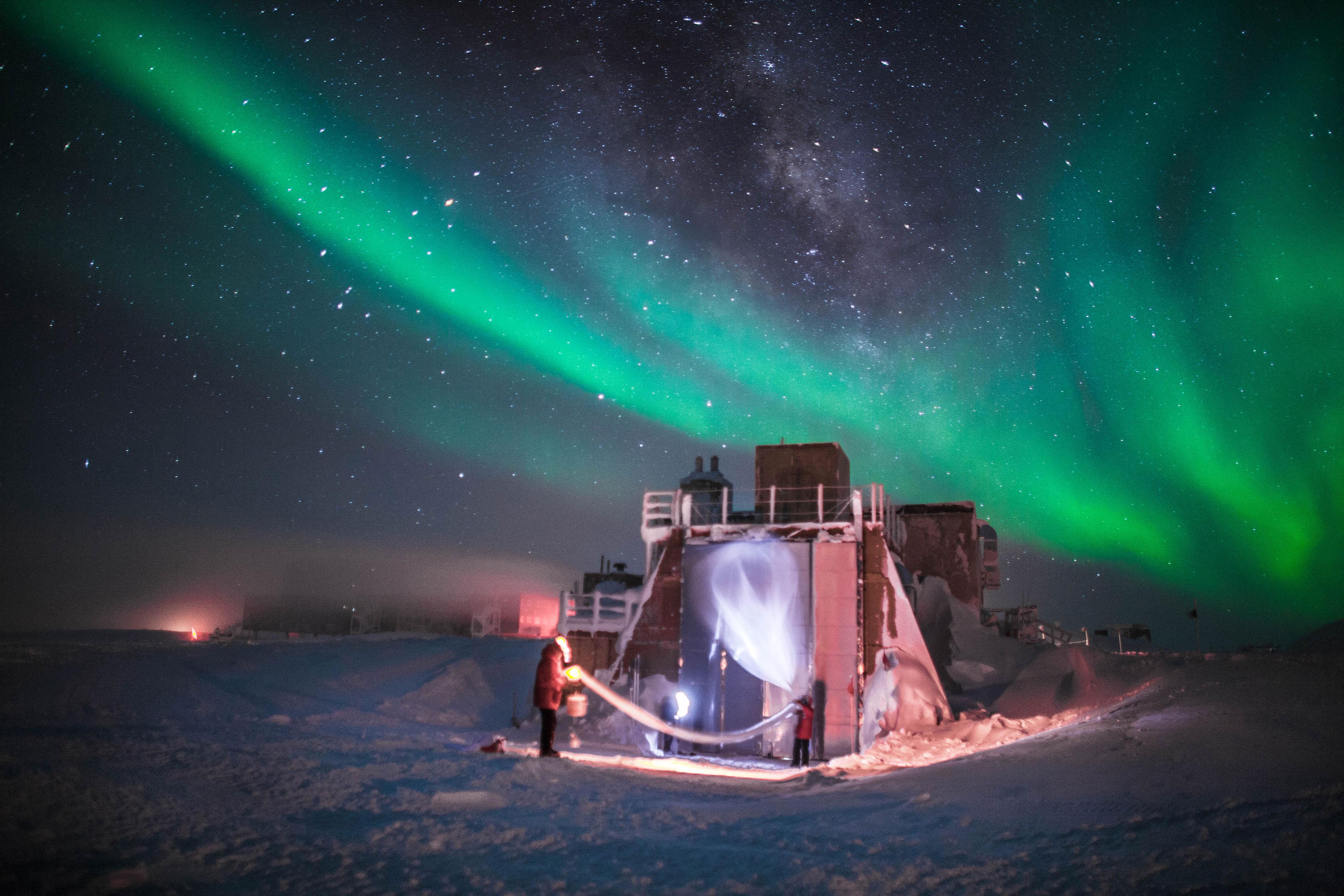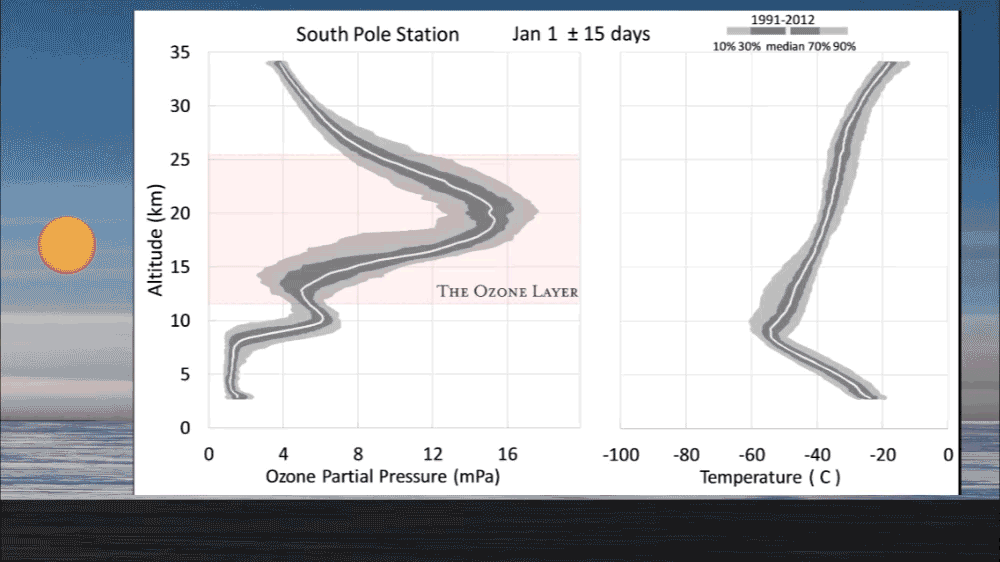

The hole in the Earth’s ozone was quite the sensation in the late 80s. Two faded pictures that hang on Brian Toon‘s office wall at the University of Colorado Boulder are a testament to the attention. One is from an airplane as he flew over the South Pole. The second, taken from the ground, is of his plane’s exhaust plume.
“It was in such a remote part of the world that it was very difficult to make observations there or have any idea what was going on,” Toon said.
In 1987, Toon was in on groundbreaking studies of the ozone layer, participating in the Airborne Antarctic Ozone Experiment, which was based out of Punta Arenas, Chile. The problem was alarming. Scientists had just discovered a huge hole in the ozone over South Pole.
Ozone high up in the atmosphere absorbs most of the sun’s ultraviolet radiation. We need it to help prevent things like skin cancer. Toon and other scientists wanted to know why this hole appeared every spring near one of the coldest places on Earth. He and others gathered reams of data. They tested out theories.
An early one thought chemicals from airplane engines were to blame. As Toon recounted, after their research flights all the data would be printed on paper charts, “little wiggly lines” he called them, and hung up on the wall. “And so...you rush over and see, oh, they didn’t see any nitrogen oxides, that answer’s gone,” said Toon, who explained airplanes weren’t the problem. Chemicals in certain products were to blame.

Retired National Oceanic and Atmospheric Administration scientist Sam Oltmans, who still consults with the agency today, said that back in 1987 “there was never anything like this before.” Early in his career, Oltmans helped collect baseline data when the ozone layer was healthy. By the mid-1980s it wasn’t.
Later that decade scientists identified chemicals in hairspray and air conditioners as the cause.
“There was some resistance from particular, like the manufacturers at first,” Oltmans said. “But unlike climate change it wasn’t political litmus test.”
So what brought about the change and started the ozone hole on the path to healing?
In September 1987, the U.S. and about two dozen other countries signed the Montreal Protocol to reduce production and consumption of the offending chemicals, known as chlorofluorocarbons.
As David Fahey, co-chair of the Montreal Protocol’s Scientific Assessment Panel and director of the Chemical Sciences Division at NOAA’s Boulder, Colorado, Lab, put it “In 1987, they all agreed to build a brake pedal. It’s not going to prevent the automobile crash. It just means you’re going to crash at a slightly slower speed.”
As scientists learned more through research, leaders were able to revise the agreement. They phased out other ozone depleting substances.
“Science played a key role…each time the parties came together and considered this,” Fahey said.

Over the years, climate change became part of the discussion. It turned out many chemicals that ate away at ozone also contributed to climate change. As recently as 2016, world leaders decided to phase out even more harmful chemicals.
The Montreal Protocol achieved many successes. As Brian Toon at CU Boulder reflected on his mission 30 years ago, he’s puzzled why the U.S. struggles to address climate change today.
“Americans build things. Americans solve problems. If there is a mystery, the American spirit is go solve the mystery,” he said. “So Americans are going to go stick their head in the sand and say, ‘Oh, I don’t understand climate science so I’m going to ignore it.’”
Scientists say the ozone hole over Antarctica is no longer growing. It’s expected to take decades to recover. Ozone researchers tracking that have a new challenge. As scientific knowledge around climate change develops, it makes their job even more complicated.
Read More: Climate Scientists Lay Out The Data: Earth Is Getting Hotter








